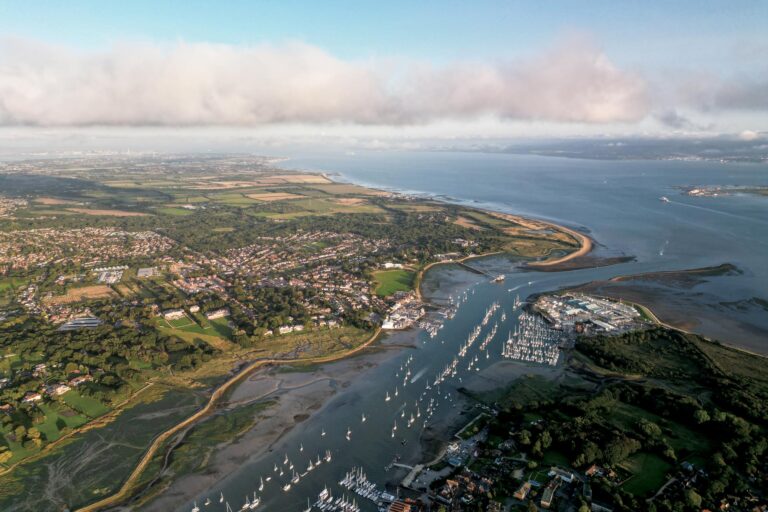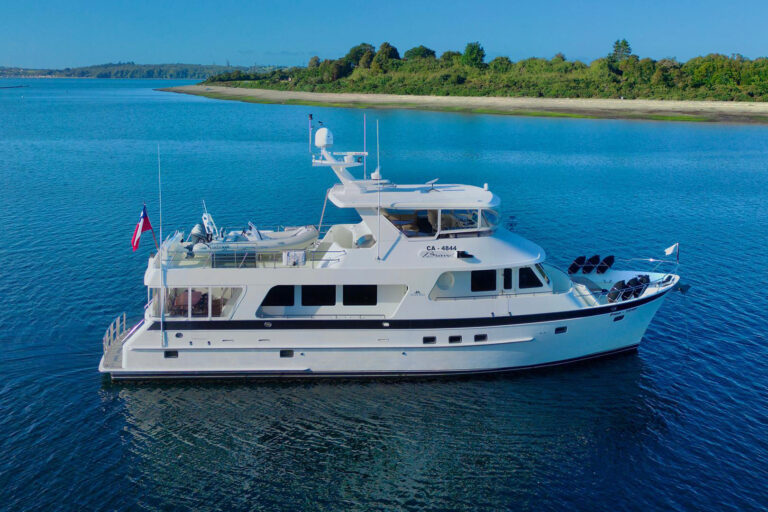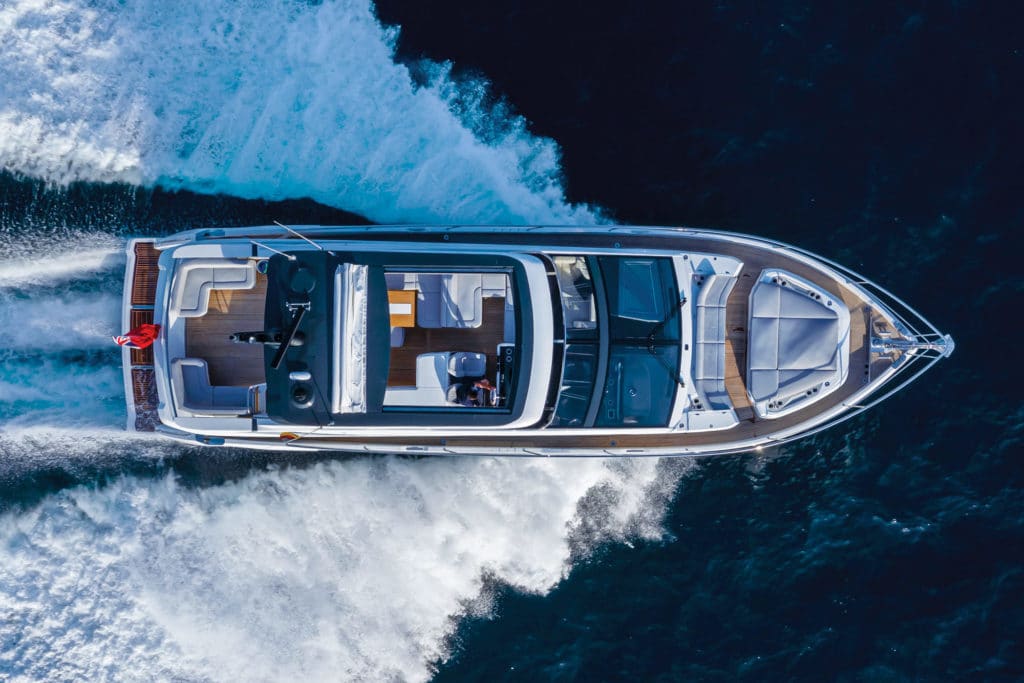
The Pearl 62 is an eminently practical family yacht. It replaces the 65 as the entry-level model in the UK-based company’s three-model portfolio, which includes the Pearl 80 and the Pearl 95. The 62 has done well since its world premiere in Düsseldorf, Germany, a year ago; around 10 units have been sold, including Hull No. 3, which is the one I got aboard.
UK-based naval architect Bill Dixon’s studio draws all the Pearl boats. Like previous Pearls, the 62′s profile is sporty for a design that packs full-size utility, which means a flybridge, cockpit, full side decks and a foredeck terrace. Lots of natural light adds to the sense of space inside; beyond all the glazing in the superstructure, there are aft-deck doors, hullside windows, a two-pane windshield, and sunroofs between the top of the windshield and the flybridge.
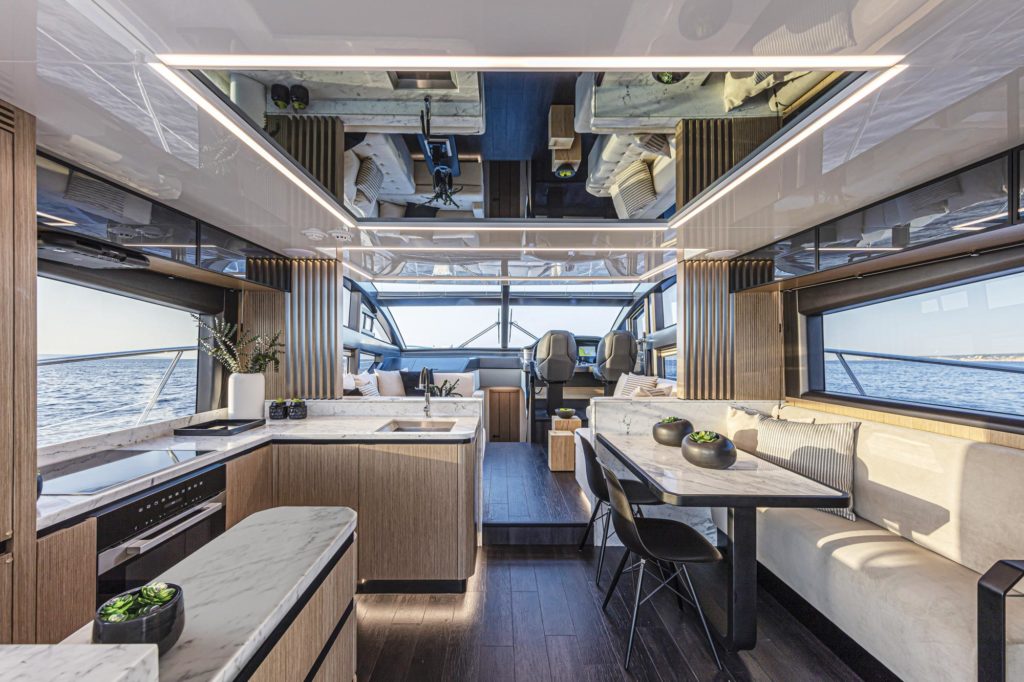
For the past eight years or so, the South Africa-born “Queen of Taupe,” Kelly Hoppen, has handled Pearl’s interior decor. The combinations she created for owners of the 62 are her signature brand of neutral, soft, calm, cool and soothing. The 62 I got aboard had the most popular veneer: a light reconstituted oak. The main deck had a galley aft and to port, with the optional dinette to starboard. Amidships was all lounge with picture windows, while the bridge and two helm seats were to starboard. This 62 also had an electrically opening side-deck door by the helm, an option I’d strongly recommend.
Thanks to the Volvo Penta IPS engine installation, which keeps the machinery well aft, and the placement of the fuel tanks beneath the owners’ berth, the 62 has space for a four-stateroom, three-head layout.
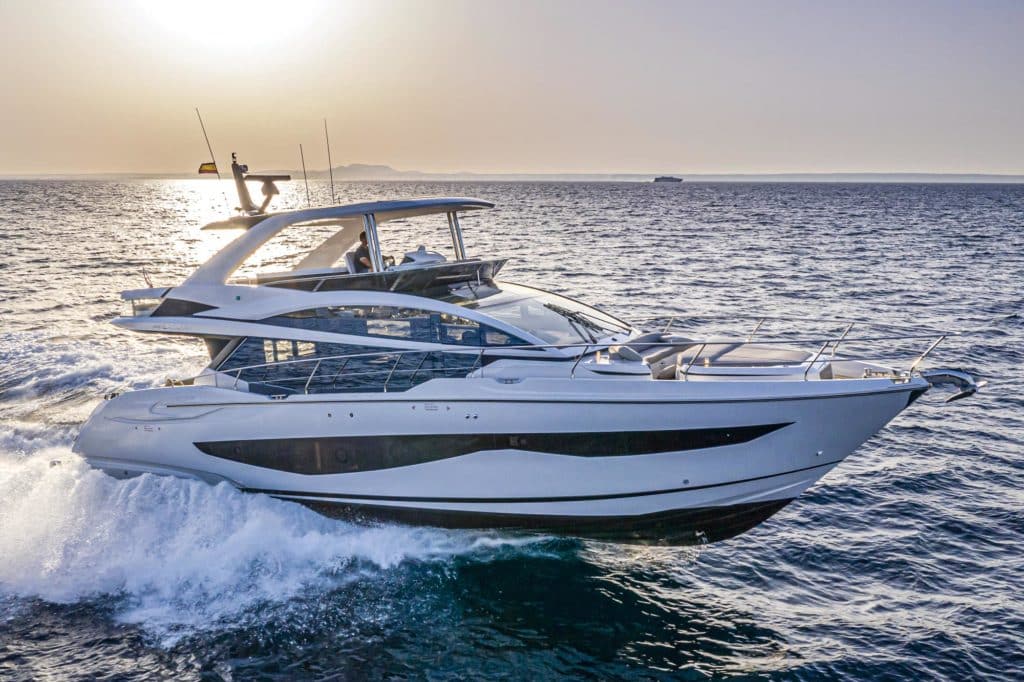
The full-beam owner’s stateroom is amidships, just forward of the yacht’s machinery space, with its own dogleg staircase descending from the starboard quarter of the salon. Owners have a few choices to make with this stateroom. The first is the location of the stateroom door, which affects whether the linen closet with a washer and dryer is inside or outside of the stateroom. The owners’ berth faces aft and has a vanity and stowage to port, with the option of a chaise-style lounge or a two-seat nook to starboard. The en suite is aft and to port with a shower stall.
The other three staterooms are accessed from a central set of stairs that descend from beneath the windscreen. The VIP with a double berth is in the bow with several skylights. Two twin-berth staterooms are amidships. The portside stateroom has en suite access to the head that also serves as the day head. The starboard stateroom also uses this head. Both of these twin-berth staterooms convert to doubles.
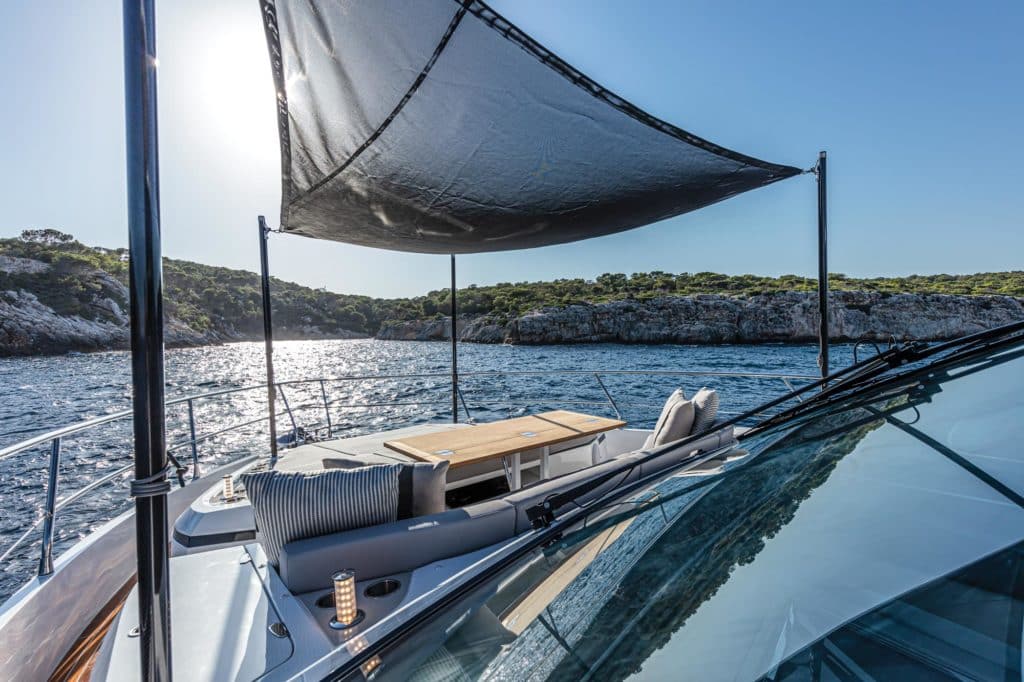
An optional en suite cabin for one crewmember can be placed in the space between the transom sofa and the engines. Access is via a concealed hatch beneath the sofa cushions. Owner-operators can specify the space as a PWC garage.
The tender launches and recovers from a hydraulic platform that moves aft before fully dropping down. A sweet spot in its actuation cycle creates a terrace on the sea with a beach-club vibe.
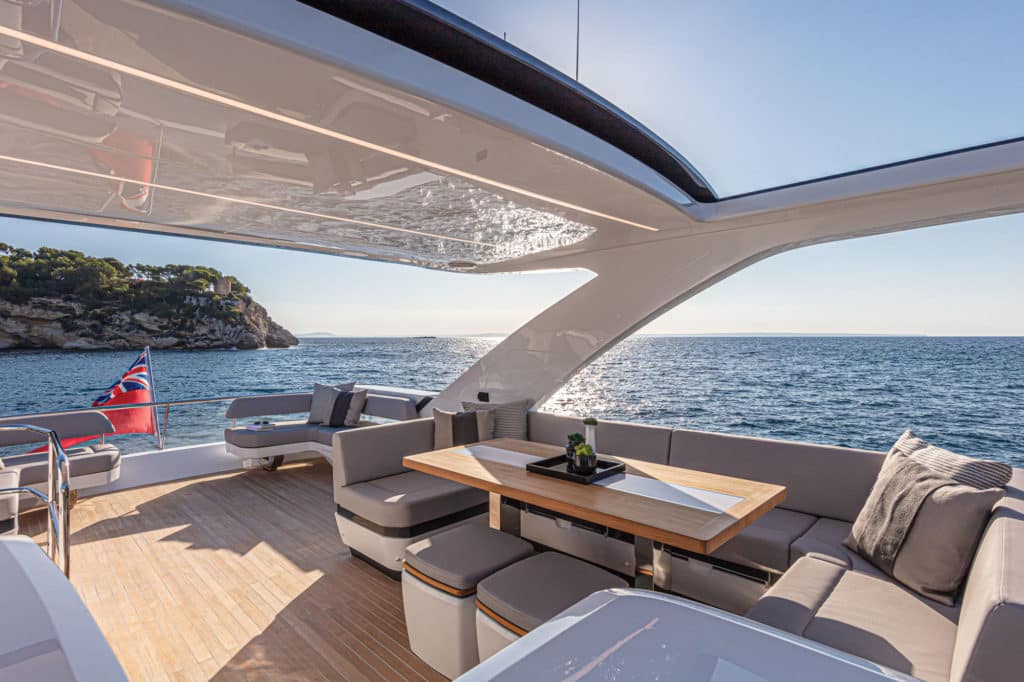
The 62 I ran was fitted with the largest available engines: twin 900 hp Volvo Penta IPS1200s, which delivered around 32 knots at just over the rated 2,300 rpm. Smaller 800 hp IPS1050s are available, but all of the 62s sold so far have been specified with the punchier blocks. With the yacht at around half-load—which means a light displacement of 70,400 pounds, 70 percent fuel, 30 percent water and four people aboard—the Garmin instrumentation recorded a speed between 30 and 32 knots in calm seas. Throughout the runs, the trim assist was off, but the optional Seakeeper 9 was running. At 2,000 rpm and 23 knots, the diesels burned 65 gph, which, given the fuel capacity of 726 gallons, translates to a theoretical range of around 260 nautical miles. Halve those revolutions per minute, and the speed falls to around 10 knots while the range climbs to about 600 nautical miles.
Handling is precise, and the turns can be relatively tight if the wheel is spun hard, but there is no dramatic lurching. The yacht inspires confidence in the skipper from both helms, and the joystick controls make for easier close-quarters maneuvers. Dynamic positioning is available as an option, and I think it’s worthwhile.
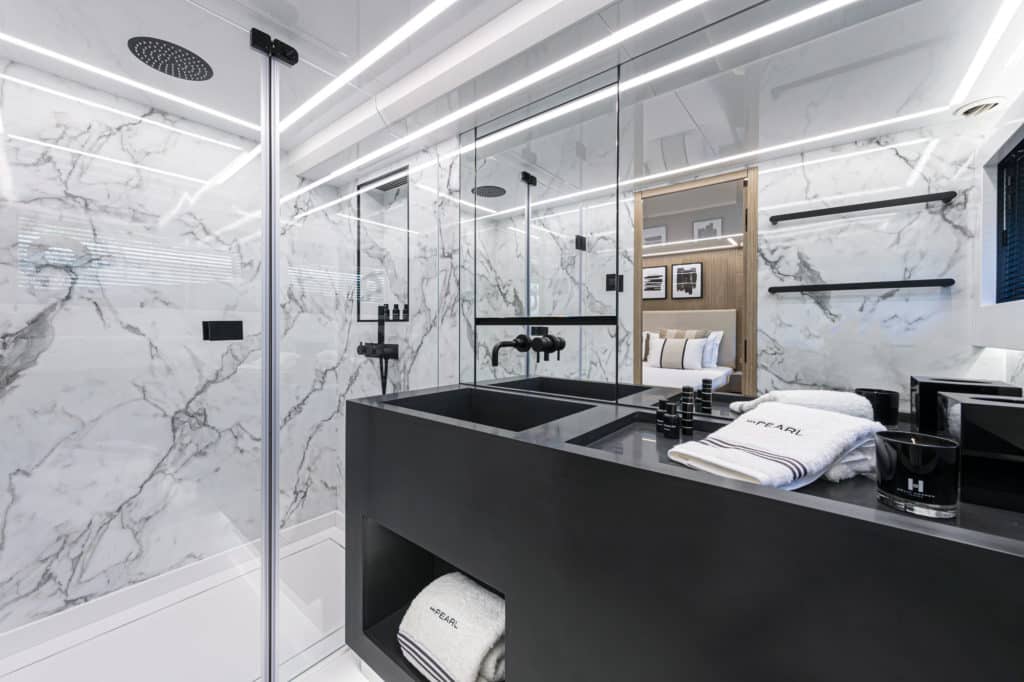
Constructionwise, Pearl’s yachts are laminated and mostly fitted out at the builder’s Chinese partner, Hansheng, and then finished in the UK (if Europe-bound) or Fort Lauderdale, Florida (for US owners).
Hull No. 5 is the first Pearl 62 expected to be delivered on this side of the Atlantic and could see a stateside debut as early as this spring.
Take the next step: pearlyachts.com





